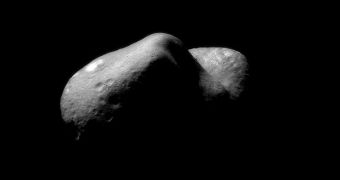Earth's ozone layer could be utterly destroyed and depleted if a medium-sized asteroid slams into the deep ocean, rather than hitting a landmass. The new work shows the layer would take decades to be restored, during which time the damage to the planet would be substantial.
The largest atmospheric effect would be that the planet would no longer be protected from the vast amounts of ultraviolet radiations that the Sun produces around the clock.
If they are able to penetrate down to the surface, these radiations can cause massive damage to all living things, causing for example mutations in the DNA of both plants and animals.
This would mean that skin cancer incidence would go up, while crop productivity will plummet, to name just a couple of the long-term effects. This could last for decades, and then some.
The team behind the new study, which is based at the Planetary Science Institute, says that the hypothetical impactor needs to be between 500 and 1,000 meters in diameter to cause this effects.
Such a space rock would classify as a medium-sized asteroid. A larger space rock would have even more disastrous consequences.
PSI senior scientist Elisabetta Pierazzo says that a potential impact would send enormously-large amounts of seawater into the atmosphere. The expert was the leader of the new investigation.
Rather than focusing on whether a space rock would cause tsunamis or not, the researchers turned to computer models to understand what will happen if medium-sized asteroids would strike an ocean some 4 kilometers deep.
The results of the research, published in the latest issue of the esteemed scientific journal Earth and Planetary Science Letters, show that water and chemicals such as chloride and bromide would hasten the destruction of all ozone in the upper atmosphere.
“This work represents the first attempt at combining impact simulations with a three-dimensional shock physics code and atmospheric simulations using a general circulation model with interactive chemistry,” the team leader says.
“The results suggest that mid-latitude oceanic impact of one km asteroids can produce significant global perturbation of upper atmospheric chemistry, including multi-year global ozone depletion comparable to record ozone holes recorded in the mid 1990s,” she goes on to say.
“The removal of a significant amount of ozone in the upper atmosphere for an extended period of time can have important biological repercussions at the Earth's surface as a consequence of increase in surface UV-B irradiance,” Pierazzo explains.
The researchers says that her investigation was funded by a NASA Exobiology grant, SpaceRef reports.

 14 DAY TRIAL //
14 DAY TRIAL //